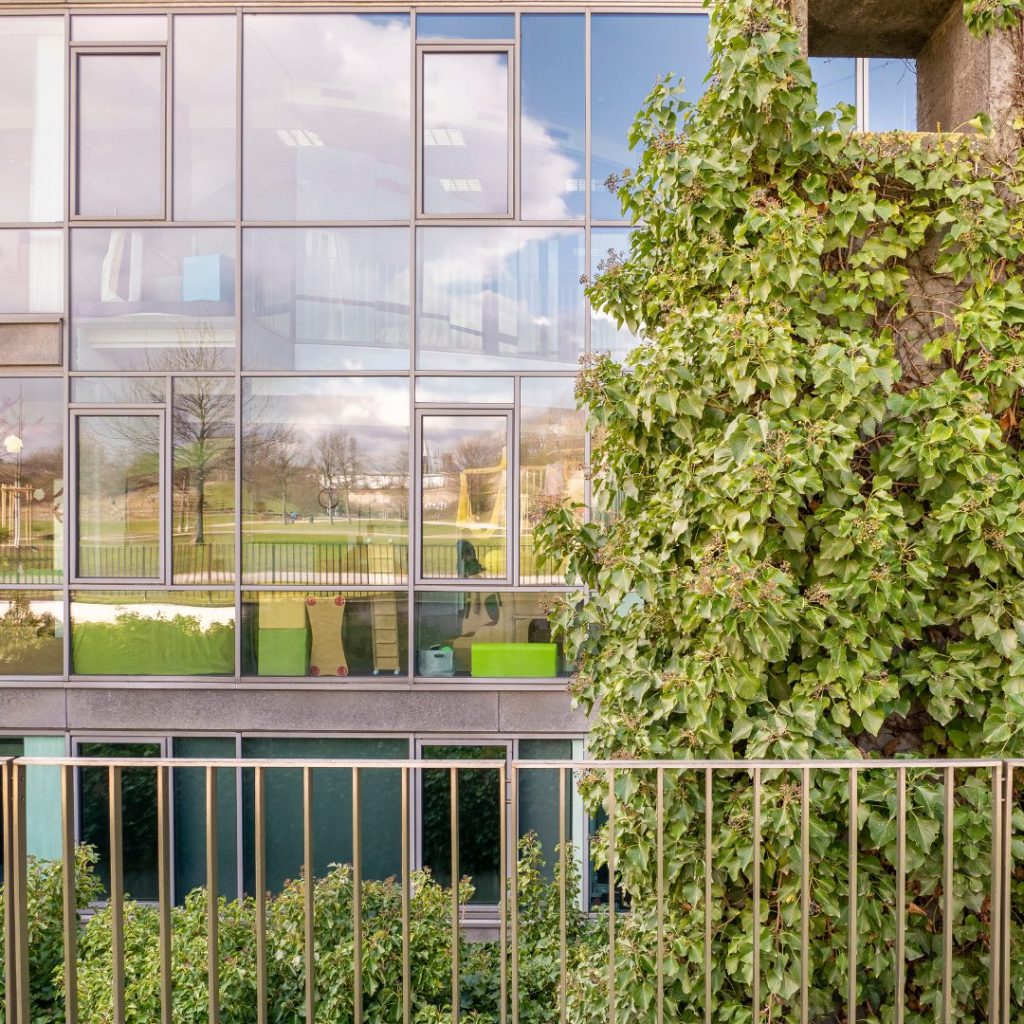Here’s a bold claim: creating a more eco-friendly workplace is even better than a regular win-win change. Going greener is more like a win-win-win, a triple helping of win for planet, people, and organisation.
Sceptical? We’ll get to the evidence in a bit, right after we dive into what ‘going greener’ means in practice.
Shades of Green
How green a workplace can get depends on the organisation’s ambition, type of business, financial constraints and plenty more besides. The key point is that even if there’s not much opportunity for big changes, most organisations can take some steps towards better sustainability.
Entry level changes: For many workplaces, the no-brainer place to start is cutting down on workplace paper and plastic waste. Painless improvements include best-practice photocopying, swapping out plastic cups for your own mug, and taking your own plastic home for recycling — office recycling is notoriously unreliable.
To this, we could add a literal greening of the office space by adding a range of suitable plants.
Keeping sustainability sustainable: The next level of challenge is to keep sustainability going, and not letting it fade after a short-lived burst of enthusiasm. Maintaining momentum requires building green practices into the organisation’s structure, perhaps through:
– Creating ‘green champions’ with sustainability roles
– Publicising and sharing a sustainable culture
– Regularly setting goals
– Scheduling regular meetings
– Engaging in local initiatives
Green hero level: The most serious commitment to greener, more sustainable working involves looking at the workspace. There’s more of that triple win here: eco-friendly office designs can also be more liveable, simultaneously slashing energy bills while providing workers with more natural light, better ambient temperature and lower levels of noise. This in turns makes the organisation an attractive proposition for top talent.
OK, fair enough, getting to the more ambitious end of the green spectrum does involve commitment of time and money. As might be expected, these give the greatest return in terms of staff health, happiness and ROI.
Where’s the evidence?
So, with a more sustainable workplace, the environmentalist, office worker, and business owner can link arms and stroll towards a pollution-free sunset.
If that sounds a wee bit Walt Disney, it’s actually backed by some solid evidence.
First, the environmental case for a greener workplace is straightforward:
– Offices are colossally wasteful, contributing substantially to the 80 million tonnes of printing and writing paper discarded in the UK each year.
– They’re also massive contributors to landfill -although an estimated 70% of office waste is recyclable, only 7.5% makes it to a recycling facility.
– With heating and hot water responsible for 32% of UK emissions, inefficient office buildings (the average commercial UK property has a dismal EPC rating of D) deepen our carbon footprint.
But a more sustainable workplace also benefits the business bottom-line:
– Consumable waste comes at a cost – about £15 billion a year for UK businesses, according to one estimate — with millions more spent on wasted energy.
– More sustainable workplaces and organisations find it easier to recruit and retain talent. Recent research by PwC found that two-thirds of respondents (in five countries) wanted to work for socially responsible employers, and 36% of HR professionals are making sustainability and social responsibility a key part of their hiring strategy.
– Given that the environment ranks first in Gen Z’s concerns, this tendency is only going to increase.
And as for the benefits on health and wellbeing:
– It’s uncontroversial that improvements to natural light, temperature control and noise levels all positively impact on cognitive performance (and hence productivity) and wellbeing. Through our Well BI proposition, we help businesses to realise these improvements through better office design.
– There’s growing evidence – pun intended – that even the humble office plant can improve wellbeing. Research studies have found associations between the presence of office plants with decreased stress, reduced blood pressure, and increased productivity. Small scale studies even showed a reduction in sick days when plants were introduced.
Putting it all together, there aren’t many changes we can think of that can protect the environment and lower emissions and reduce OPEX and recruitment/retention costs and improve worker wellbeing (and hence productivity).
Whichever way you slice it, it turns out that a greener office is better all the way round.
ART Health Solutions is a wellbeing consultancy, providing science-based, holistic wellbeing recommendations. Our solutions use wearable technology to gather secure, anonymised data directly from the organisation and its employees. For all enquiries, please contact our friendly team.
